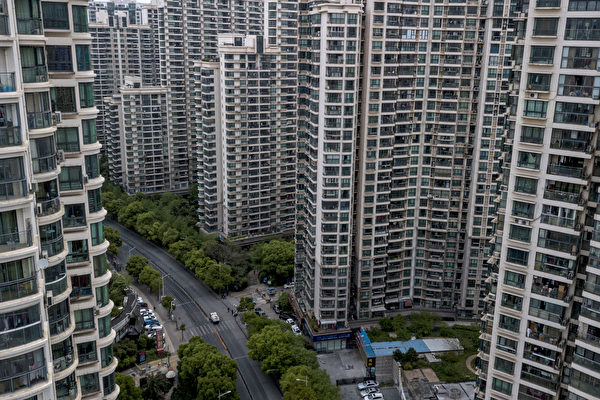Recent times have seen more than 30 cities in China expressing their support for the authorities’ housing policy of “renovate old for new,” and the country’s top economic hub, Shanghai, has also joined this trend. Economists believe that amid declining purchasing power and high real estate taxes in China, the impact of the “renovate old for new” policy may not be significant.
According to official Chinese media reports, Shanghai’s housing policy focuses on residents planning to sell second-hand homes to purchase new ones. Residents interested in buying new homes first reach an agreement with real estate developers, who then facilitate the sale of their old homes through real estate agencies. Once the old home is sold, the new home transaction is completed as agreed.
The initial participants in this policy include over 20 real estate developers and nearly 10 real estate agencies, with more than 30 projects located mainly in areas such as Jiading, Songjiang, Qingpu, Fengxian, and the Lingang New Area in Shanghai Free Trade Zone.
Real estate developers participating in this program have promised that if the old homes are not sold within a certain period, residents can unconditionally “return the house and get a refund.” Simultaneously, real estate agencies pledge to promote the old homes of residents city-wide and prioritize their sales to improve the success rate of old home transactions.
David Huang, an economist based in the United States, expressed skepticism towards Shanghai’s “renovate old for new” housing policy. He believes that while the policy may seem attractive on the surface, it lacks substantial content in reality.
During an interview with a journalist, Huang pointed out that the core issue facing the current market is the decline in purchasing power among the populace. Additionally, he mentioned that the heavy tax burden imposed by the Chinese government in the real estate sector limits the effectiveness of the “renovate old for new” policy.
Huang further stated that currently, “renovate old for new” is essentially an idealized concept that, from a logical standpoint, has limited efficacy and appears more like a slogan. He emphasized that the impact of this measure on the market is minimal, especially since the projects involved are situated in regions where real estate transactions are not very active, and the prices are inflated, painting a bleak picture for the second-hand housing market.
Data monitored by the China Real Estate Research Institute since 2023 shows that over 30 cities in China have declared their support for the so-called “renovate old for new” policy advocated by the Chinese authorities.
Looking at the overall picture, various regions have adopted two primary operational models for their housing policies of “renovate old for new.” One model resembles the approach taken in Shenzhen, where real estate companies and intermediary firms collaborate to prioritize the sale of old houses. Similar practices can be observed in cities like Ningbo in Zhejiang, Yancheng in Jiangsu, and Jinan in Shandong, where developers and real estate intermediaries jointly offer a “purchase with exchange” service. Prospective buyers subscribe and secure housing from the developers, who then engage appointed real estate agencies to sell the old homes. If the old home is sold within a specified period, the new home purchase proceeds according to the process; otherwise, the subscription funds for the new home are refunded.
The second model involves developers and state-owned platforms acquiring old homes, and residents interested in swapping their homes use the sale proceeds towards designated new housing projects. For instance, in areas like Xiangcheng District in Suzhou, Lianyungang, and Zhengzhou in Henan, state-owned platforms or developers directly purchase old homes, while the proceeds are channeled towards the purchase of new homes in corresponding projects. In Zhengzhou, the acquisition entities have devised and published acquisition plans based on the demand and gap in affordable rental housing within the city’s eight districts.
A housing intermediary salesperson in Zhengzhou, named Chen Wei, introduced the specific operational methods of the “renovate old for new” policy to a journalist. According to Chen Wei, Zhengzhou initiated a pilot program for buying second-hand homes at the end of April, with specific criteria, including possessing property certificates, limited house age of not more than 15 years, located within the Third Ring Road in the…
Chen Wei also mentioned that in the “renovate old for new” policy, the authorities primarily serve as facilitators and not as entities assisting residents in selling their houses. The objective is to stimulate the real estate market.
Liang Botao, the general manager of China Real Estate Research Institute’s Henan branch, expressed that the current real estate sector still faces downward pressure that has not eased. The overall housing purchase intention among residents is insufficient, compounded by the prevalent mentality of “buy high, not low,” intensifying the wait-and-see attitude towards housing transactions.
Since 2023, the listing volume of second-hand homes in China has been steadily increasing. By March this year, over ten cities, including Beijing, Hefei in Anhui, Hangzhou in Zhejiang, and Guangzhou in Guangdong, had listed more than 100,000 second-hand homes. Notably, Chongqing, Chengdu in Sichuan, Suzhou and Nanjing in Jiangsu, and Tianjin had listings exceeding 150,000 units. Chongqing and Chengdu even surpassed 200,000 listed units.
With the continuous surge in the listing volume of second-hand homes in various regions, a trend of “lower price for increased transactions” has pervaded the second-hand housing market. In essence, the transaction volume for second-hand homes is achieved through continuous price reductions.
Moreover, data from January 2024 showed that the inventory turnover cycle in one hundred Chinese cities was 22.9 months, marking the highest level since data monitoring began in 2010. Specifically, the inventory turnover ratio for new residential properties in first-tier cities was 16.6 months, 19.6 months for second-tier cities, and high at 30.2 months for third and fourth-tier cities.

